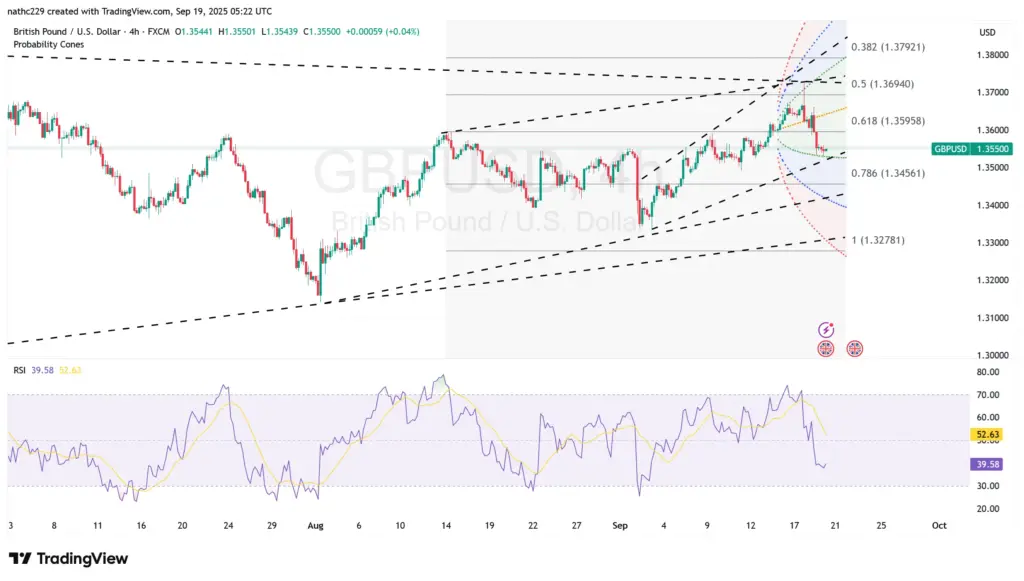GBP/USD – Correction Could Deepen but Long-Term Divergence Still Favours Sterling

Sterling’s decline reflects profit-taking and renewed fiscal concerns rather than a structural change in policy divergence. The Fed is still seen easing more aggressively than the BoE into 2026, suggesting sterling retains medium-term support provided the UK can contain fiscal instability.
Market Drivers
- Fiscal Pressures: UK gilts yields are at multi-decade highs, raising questions about sustainability ahead of the November 26 Autumn Budget.
- Monetary Divergence: Despite the BoE’s steady hand, Fed rate paths remain more dovish over the medium term, implying yield spreads may yet turn sterling-positive.
- Market Tone: Risk appetite remains cautious, with investors hedging against UK-specific risks despite broader dollar softness.
Technical Landscape
- Immediate Structure: GBP/USD has broken below the rising short-term channel established since early September, tilting momentum bearish.
- Support/Resistance:
- Key downside levels: 1.3534 (Thursday low), 1.3479 (100-DMA), and 1.3465/1.3400 (cloud support).
- Upside hurdles: 1.3591 (10-HMA), 1.3661 (Sept 18 high), and 1.3726 (post-Fed spike).
- Indicators: Daily RSI has cooled to neutral, showing room for further downside before oversold. Bollinger Bands have widened, suggesting higher volatility ahead.
Strategic View
Short-term risks skew lower, but unless UK fiscal worries deepen significantly, the broader divergence in Fed–BoE expectations suggests dips could be bought. A rebound toward 1.3787 (July high) and even 1.4000 remains possible over the medium term, while failure at 1.3479 would threaten a deeper correction toward 1.3334 (Sept 3 low).
➡️ In short, GBP/USD is tactically bearish but strategically supported by relative policy divergence. Near-term focus is on 1.3534 support and whether fiscal angst drives a break lower, or whether buyers re-emerge on the divergence theme.
